Introduction and Background
- Name of the organization:
- The Veterans Affairs Loma Linda Healthcare System.
- Geographic location:
- The organization has several community clinics;
- The community clinics are located in California in:
- Palm Desert;
- Corona;
- Sun City;
- Rancho Cucamonga;
- Victorville.
- Organizational mission:
- Central mission:
- To provide efficient medical services to eligible veterans;
- Mission is accomplished through:
- Development of outpatient, inpatient and home care programs;
- Regular enrollment programs;
- Quality control of the care provided.
- Central mission:
The VA Loma Linda Healthcare system is included into the American medical service system; the operating system is part of Desert Pacific Healthcare Network. The principle community clinics are situated in Palm Desert, Corona, Sun City, Rancho Cucamonga, and Victorville which reside in the state of California.
A VA (Veterans Affairs) Healthcare System is considered to be an operating system uniting about 153 medical centers, 207 Veteran Centers, and 882 community-based outpatient and ambulatory clinics. The system unites about 92 comprehensive programs of home-based care, aimed at medical services provided to eligible veterans. The principle facilities of the system cover inpatient hospital care, laboratory services, mental health counseling, pharmaceutical dispensing, custodial care and rehabilitation for various disabilities. The facilities of VA Healthcare system have more than 200,000 full-time-equivalent employees, covering 55,000 nurses and 13,000 professional physicians.
The central mission of the organization is considered to be aimed at providing efficient medical service to veterans; the fulfillment of the mission is achieved through the development of various outpatient, inpatient and home care programs. The system operates regular enrollment programs helping to manage health care to its beneficiaries. The goals are concentrated on giving necessary care to the veterans who are eligible; and the control of the given care quality (The Healthcare System for Veterans: an Interim Report, 2007).
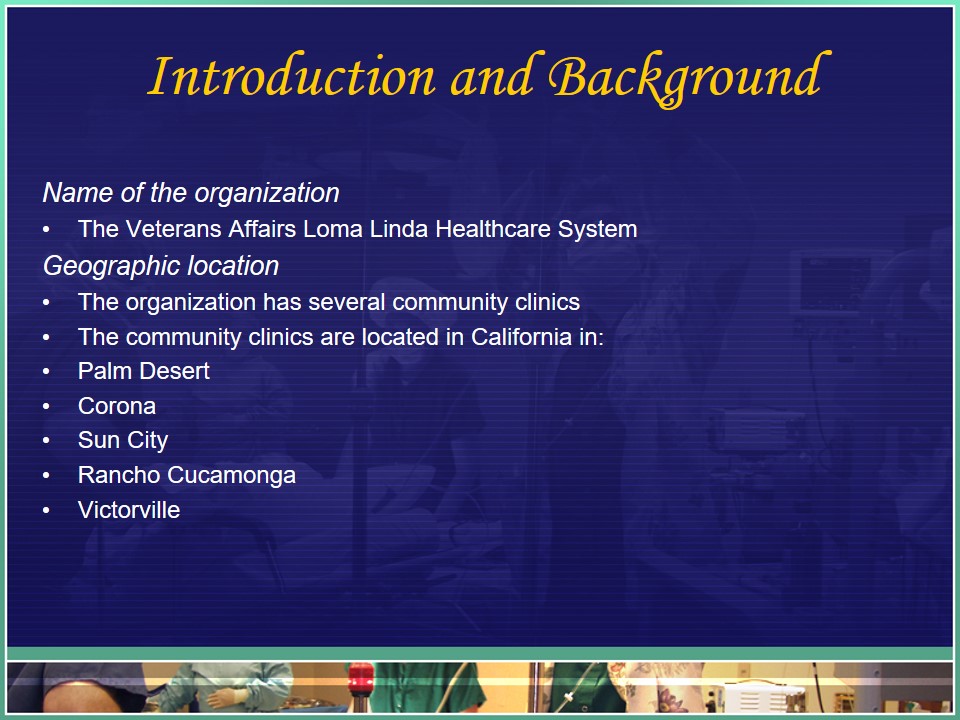
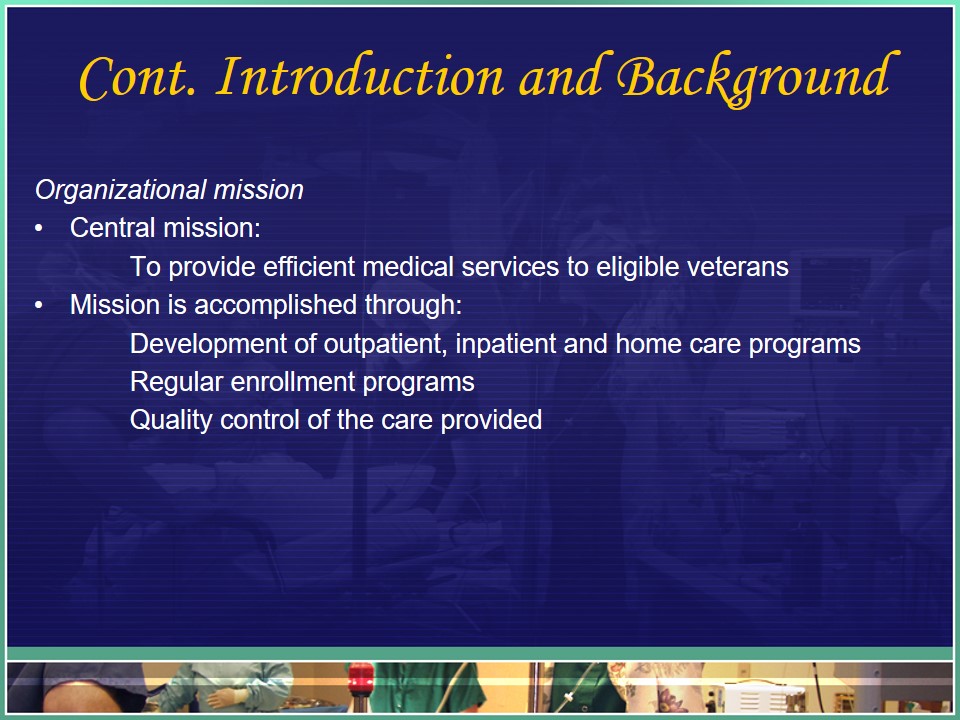
Industry Background
Historical Background of the Industry:
- Composition of the organization:
- Composed of:
- the Memorial VA Medical Center;
- five community clinics;
- Composed of:
- Inception and development of organization:
- Medical Center started in 1977.
- Community clinics added at the end of the last decade.
- Later developments:
- Additional reclassification of benefits;
- Introduction of VA enrollment system;
- Priority groups’ classification.
The VA Loma Linda Healthcare System consists of Memorial VA Medical Center of Jerry L. Pettis and five basic community clinics. The medical center was opened in 1977 having the name of famous Congressman Pettis who used to work diligently locating the Loma Linda facilities known today. Gradual development of medical service centers and organizations has been observed at the end of the 20th century.
According to the Veteran Affair (VA) estimates, there were more than 24 million of United States military veterans in 2006, the significant part of whom required medical service; that period appeared to be of special importance for the medical organizational system, which managed to provide help to more than five million of those people and about 400,000 of other patients.
It is necessary to stress that about 2.9 million veterans were additionally enrolled into the system; by additional reclassification of benefits through congress’s reclassification system of veteran’s authorized to obtain benefits (The Healthcare System for Veterans: an Interim Report, 2007).
In accordance with Veteran’s Health Care Eligibility Reform Act provisions of 1999, the VA enrollment system started to call for veterans desiring service of being assigned to priority groups. The veterans who were disabled managed to get the highest care portion, through their being in the priority group. Present situation remained to be similar; the VA department introduced the division into priority groups in accordance with the level of patients’ medical care demand (Mettler, 2002).

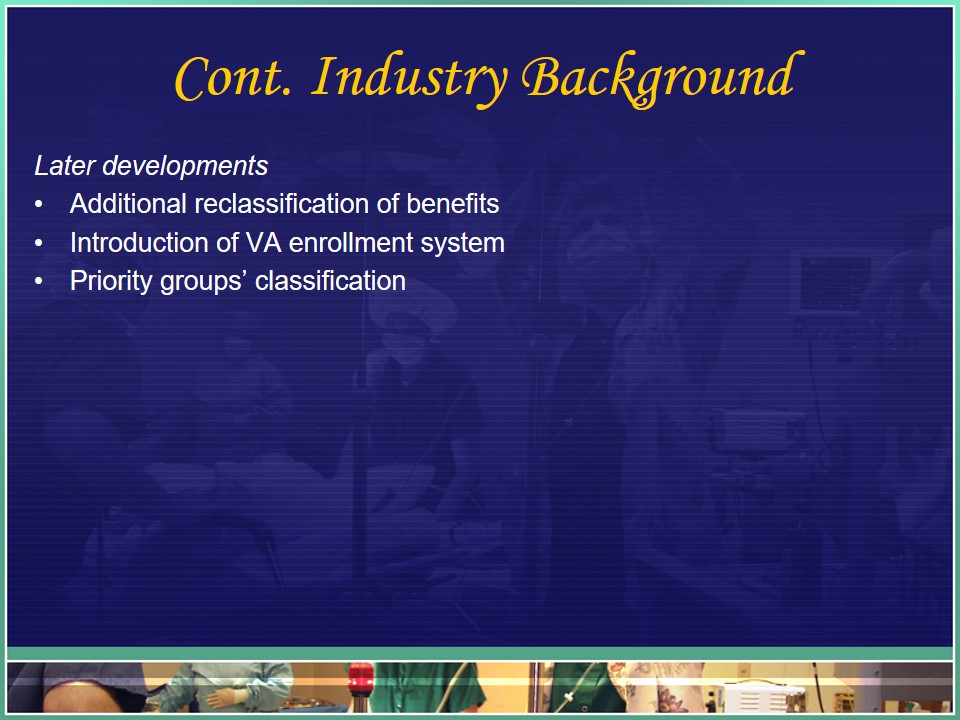
Consumer Analysis
- Demographics of potential consumers:
- Age, Marital status, Race, Sex;
- Psychographics of potential consumers:
- Attitudes, motivation, perceptions, personality, lifestyle, knowledge;
- Consumer behaviors of potential consumers:
- Potential consumers are individualistic in nature;
- They value individual responsibility and reward;
- They make independent decisions.
The demographics of potential consumers include: age, marital status, race, and sex:
- Age – all the potential consumers are aged 18 years and above. Only persons who have attained the age of 18 are allowed to serve the United States in battlefields.
- Marital status – potential consumers are either: single, married, divorced, separated or widowed. No criteria for marital status is used in recruiting soldiers. Many of the consumers also have children.
- Race – majority of the potential consumers are White Americans. However, other racial groups such as Black Americans and Hispanic Americans are also represented to a lesser degree.
- Sex – while the majority of the potential consumers are males, females are also present but on a smaller scale (The United States Department of Veterans Affairs, 2009)
The psychographics of the potential consumers include: attitudes, motivation, perceptions, personality, lifestyle, and knowledge. Psychographics reflect not only the values of the potential consumers but also their abundance/scarcity of resources such as psychological, economic, and educational resources. Psychographics can be used to classify consumers into different segments (Greengrove, 2002).
The consumer behavior of the potential consumers can best be analyzed using the Hofstede’s dimensions’ framework (Mooij, 2004). Specifically, the potential consumers can best be described as individualistic in nature. They value individual responsibility and reward and therefore make independent decisions without first consulting with other members of their wider community.
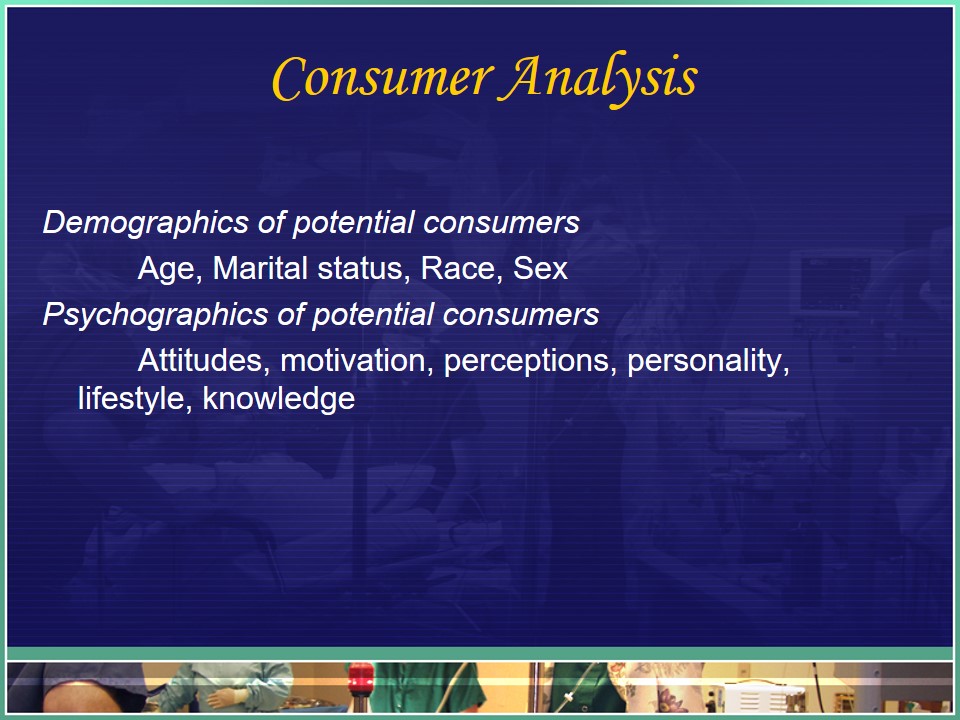
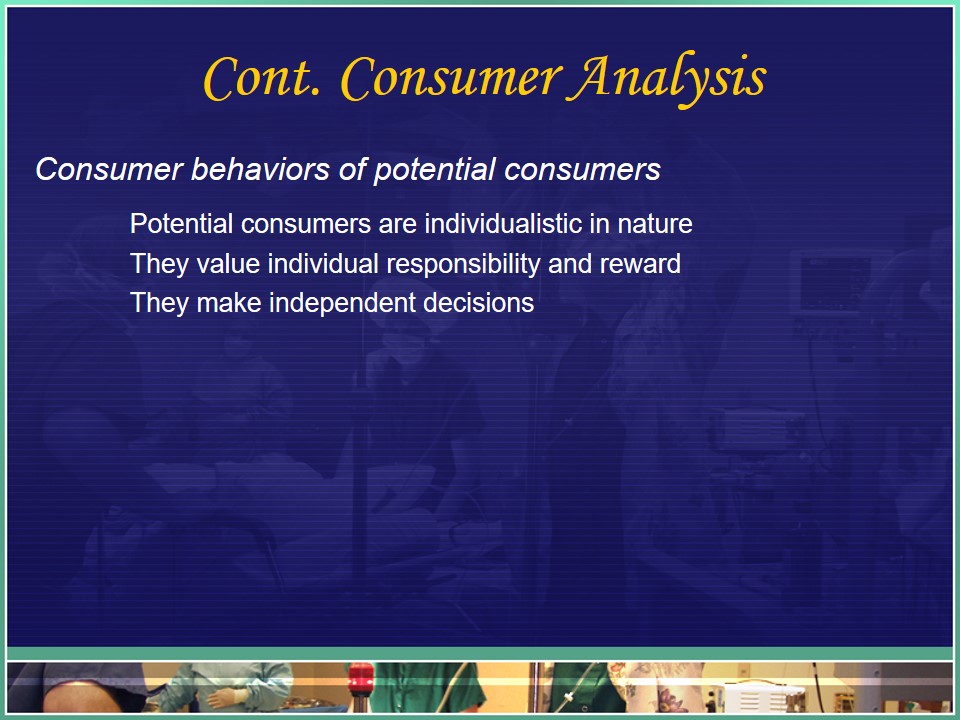
Target Market
- Primary market:
- The primary market is the veteran population
- Characteristics:
- The health of this group is directly affected by involvement in war and combat services.
- Members of this group receive automatic benefits and health care subject to eligibility.
- Secondary market:
- The secondary market involves the family and/or dependants of veterans
- Characteristics:
- The receipt of health benefits by this group is subject to the eligibility of the primary market.
- Market segmentation:
- Market segmentation will be done using the needs-based segmentation approach.
- Reason: this approach will ensure that the most appropriate product is developed to cater to the most pressing needs of consumers.
The primary market is the entire veterans population. The VA Loma Linda Healthcare system was created specifically to address the health needs of veterans who are sick, disabled, needy in any way, or have suffered any form of injuries while on the line of duty. The VA recognizes the risks and potential danger that can befall on the veterans while serving their countries in battlefields. However, not all veterans are eligible for the healthcare benefits. Eligibility depends on the subjects’ service, their health status on return back to the homeland among other criteria.
The secondary market includes the dependants of veterans such as spouses and children. These groups of individuals are also subject to receipt of healthcare benefits from the VA. However, their benefits depend on the health status of their veteran family member, and whether or not he/she suffered any injuries or death while in the line of duty (The U.S. Department of Veterans Affairs, 2009).
Segmentation is the classification of consumers into homogeneous groups. There are different approaches to market segmentation. A needs-based segmentation approach takes into consideration the needs of the consumers. It is the process of creating consumer segments according to the understanding of consumers’ needs. One of the major driving forces behind the needs-based segmentation approach is the surmounting pressure that physicians and healthcare organizations have concerning the specific needs of individual consumers. Similar to this growing trend is the general consensus that patients’ opinions are important and therefore healthcare organizations should be quick to respond to them. In addition, patients today are more knowledgeable about their health and healthcare options and have become more actively involved in their healthcare. This has changed the way physicians deal with patients (Berkowitz, 2006).
In the healthcare sector, needs-based segments are differentiated using a list of patient needs and characteristics such as “support, motivation, life challenges, emotional drive, attitudes to side-effects and preferred quality-of-life trade-offs, ability to cope and function, and issues of denial vs. insight into illness,” (Greengrove, 2002, p. 412). The greatest benefit of using a needs-based segmentation approach is that it will result in the development of products and services that are based on the actual needs of the consumers rather than on some generalizations and assumptions. For instance, a needs-based segmentation can result in the development of a treatment for specific group of breast cancer patients based on their actual needs rather than on the needs of previous patients of breast cancer.
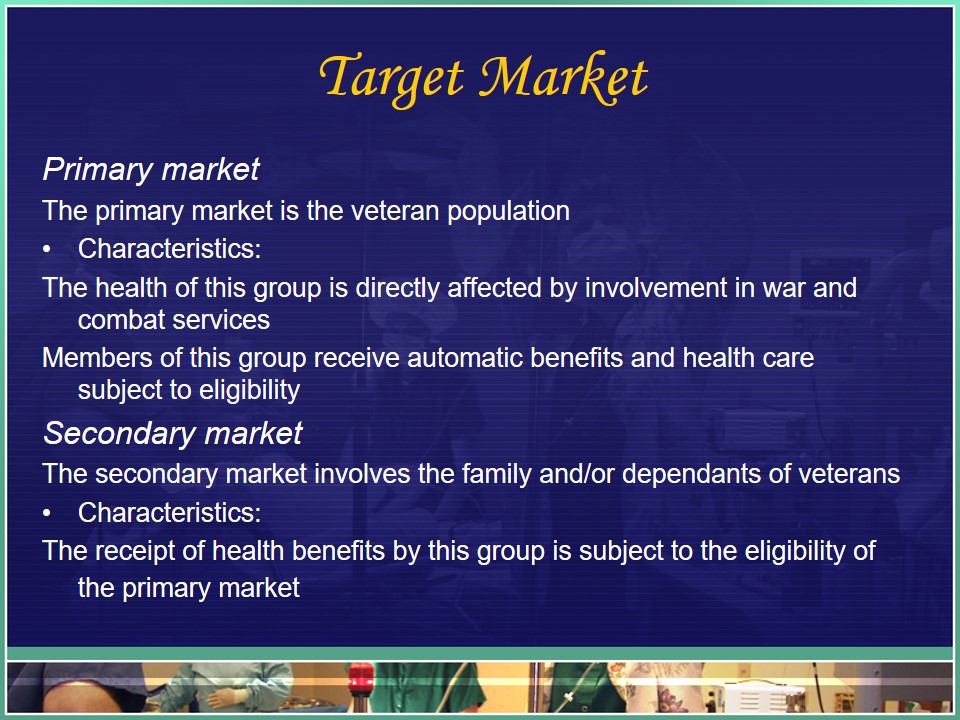
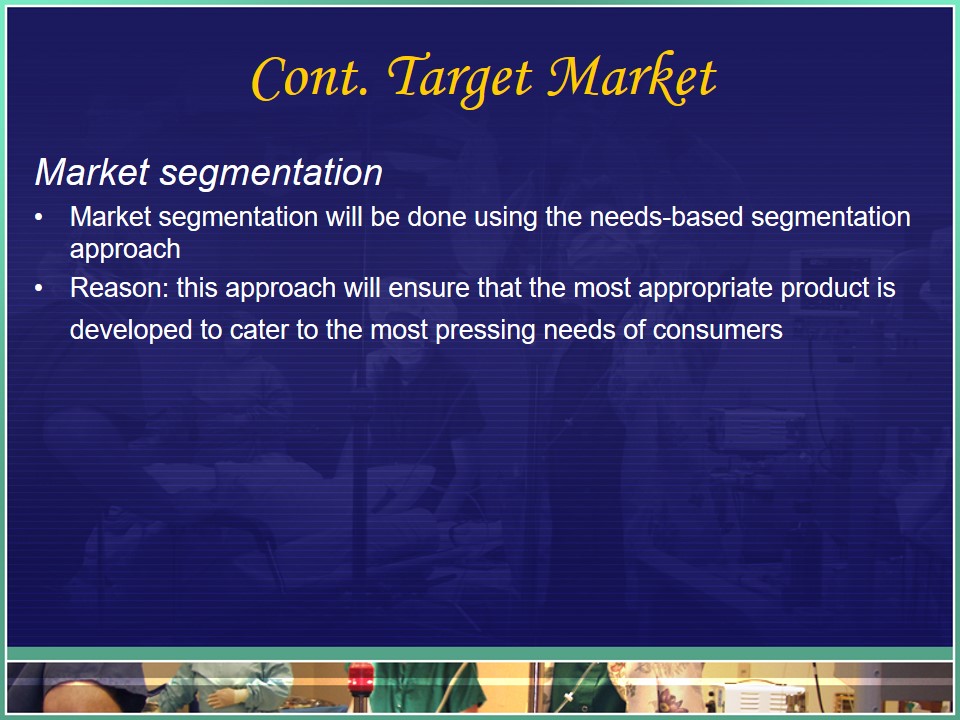
Reference List
Berkowitz, E.N. (2006). Essentials of health care marketing (2nd Ed). Sudbury, MA: Jones and Bartlett.
Greengrove, K. (2002). Needs-based segmentation: principles and practice. International Journal of Market Research, 44(4), 405-421.
Mettler, M. (2002). Healthwise for life: medical self-care for you. New York: Healthwise.
Mooij, M.K. (2004). Consumer behavior and culture: consequences for global marketing. Thousand Oaks: Sage Publications.
The Healthcare System for Veterans: an Interim Report. (2007). Congress of the United States. Web.
U.S. Department of Veteran Affairs. (2009). United States Department of VeteransAffairs. Web.